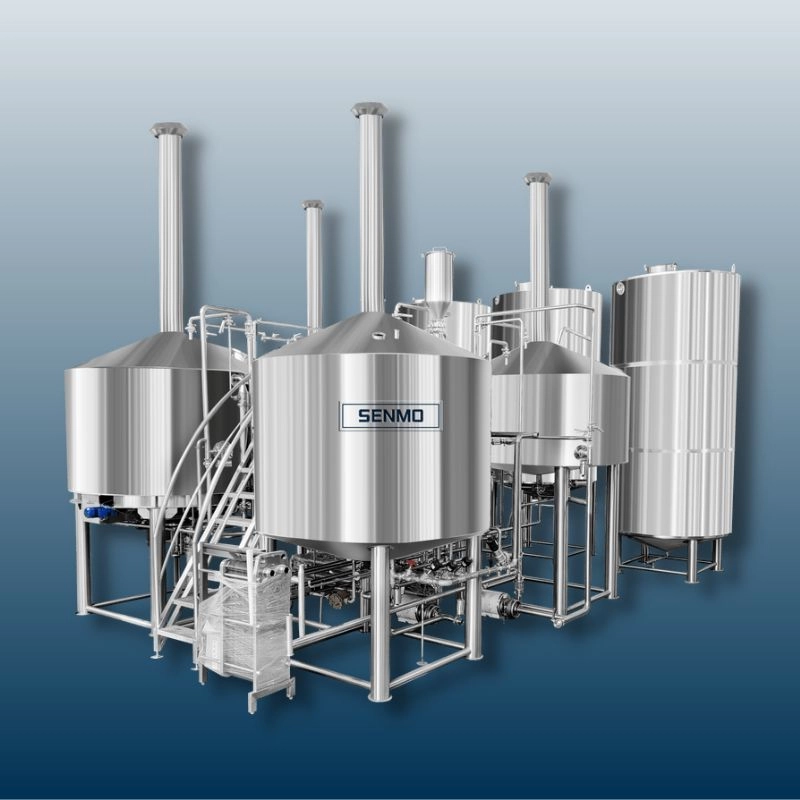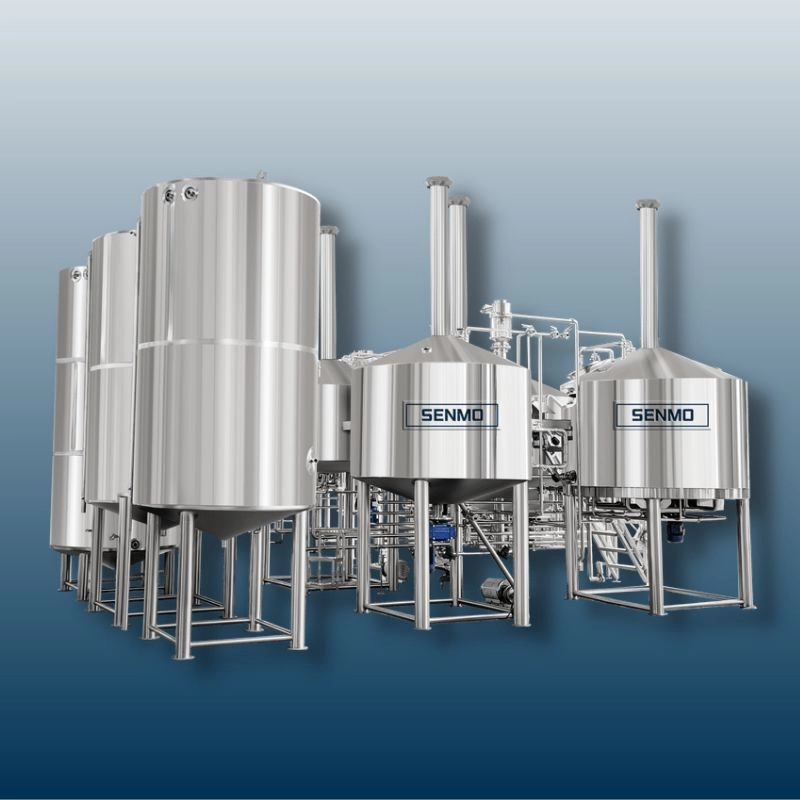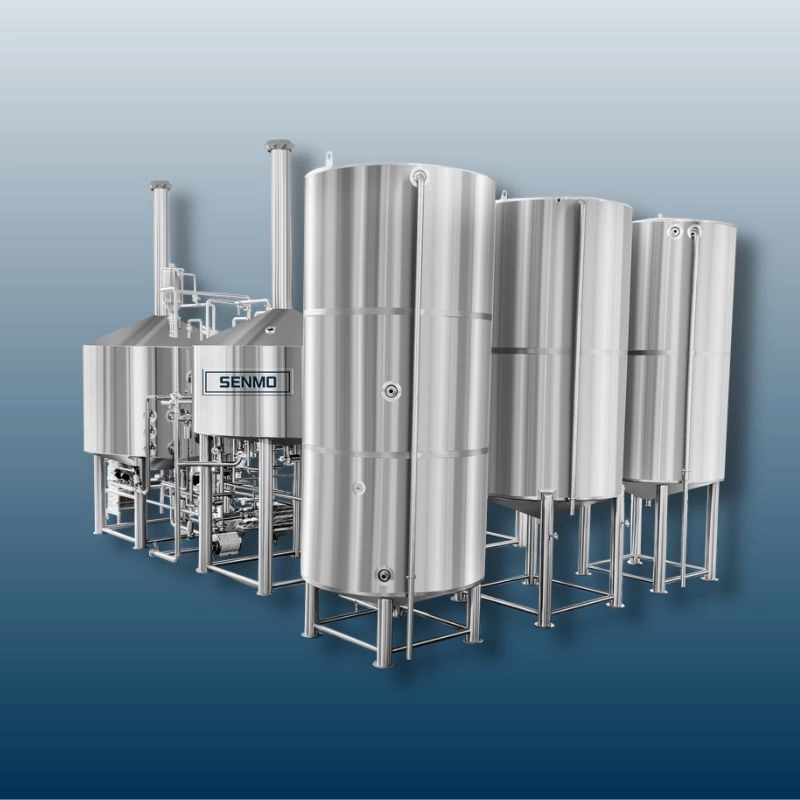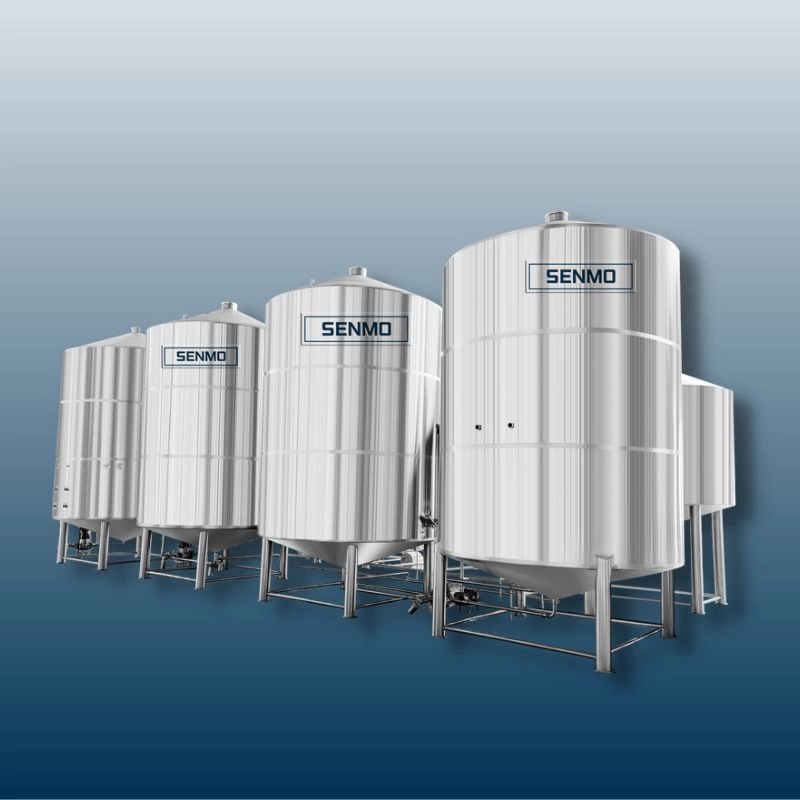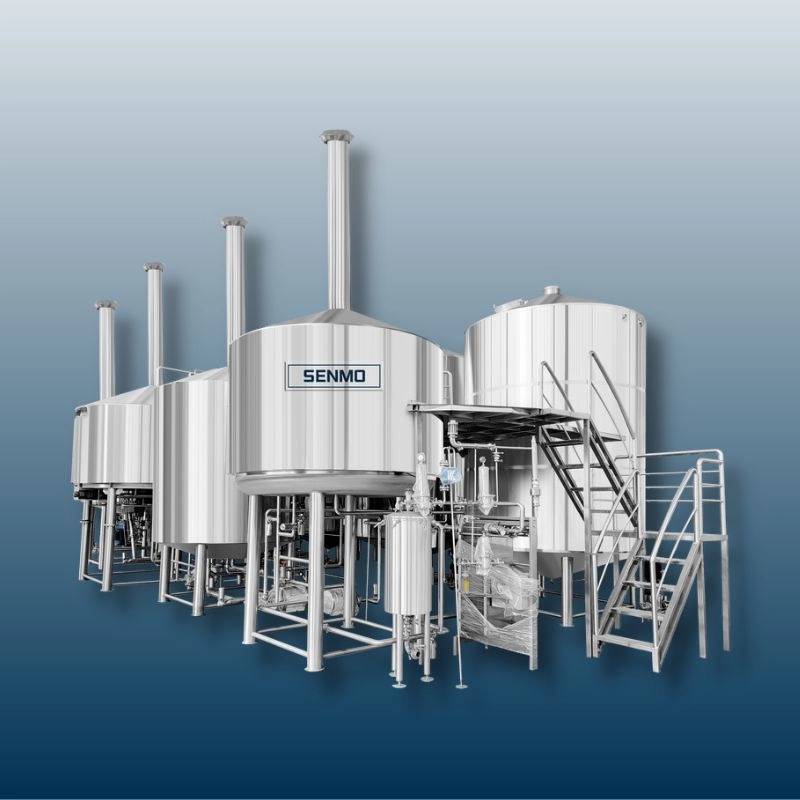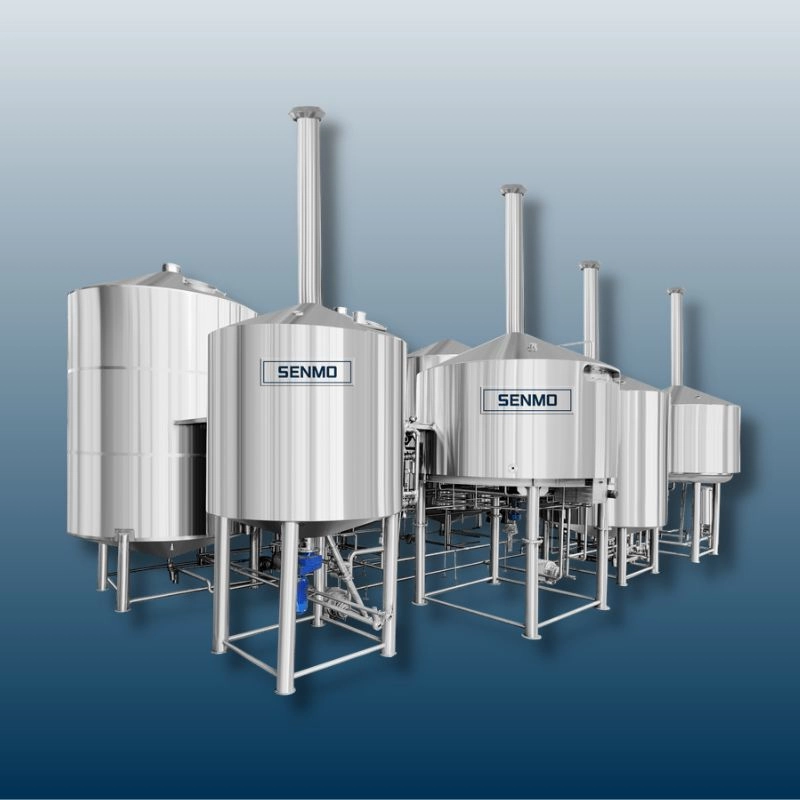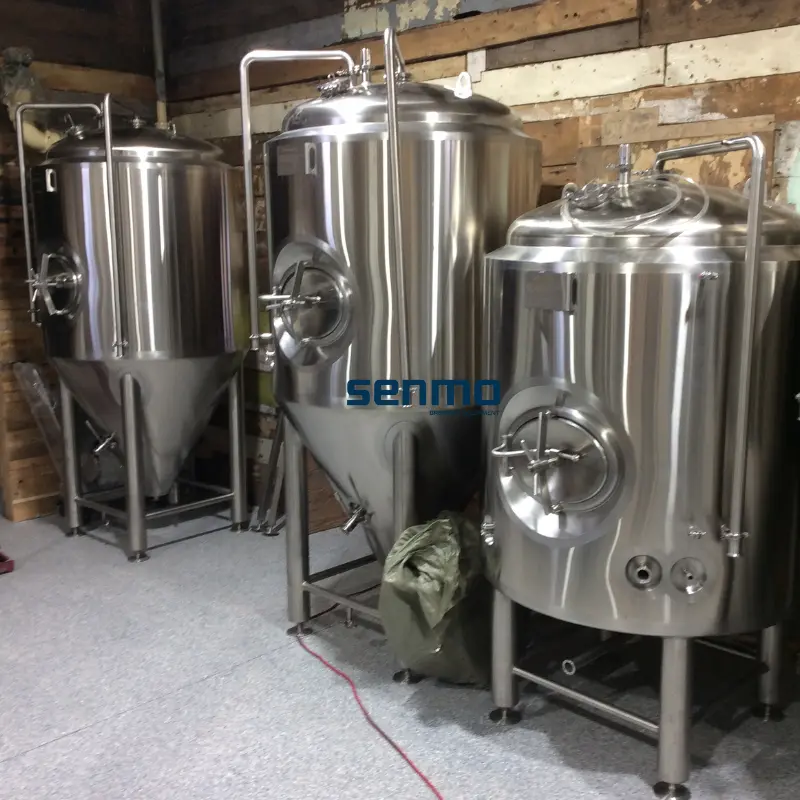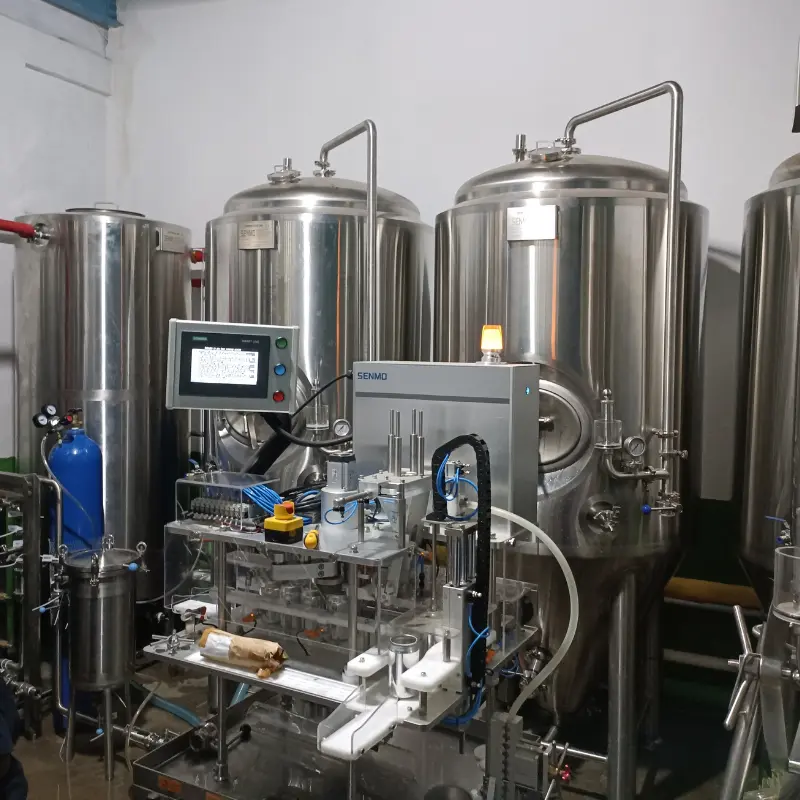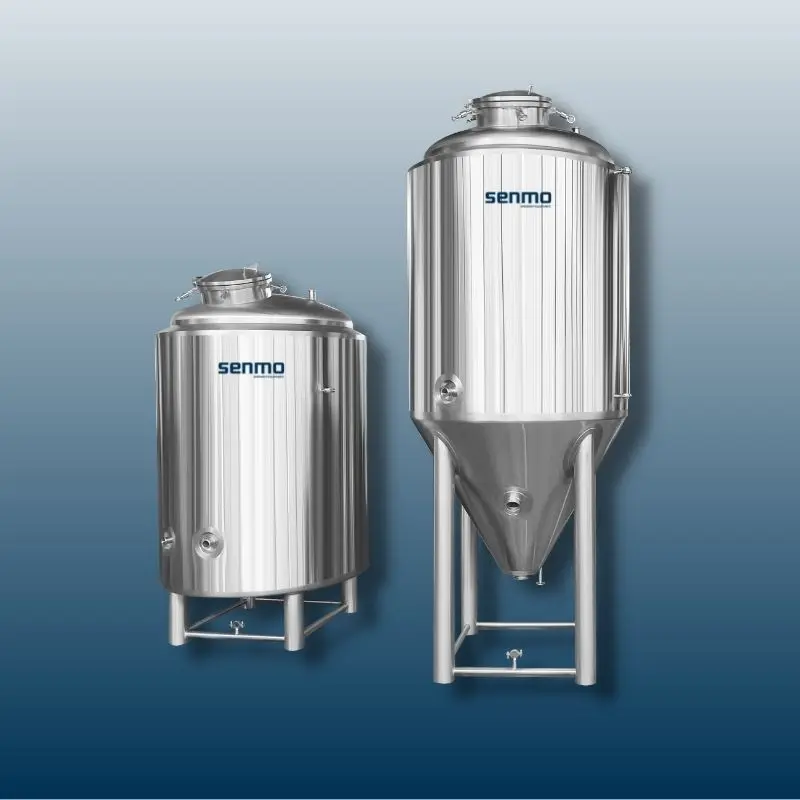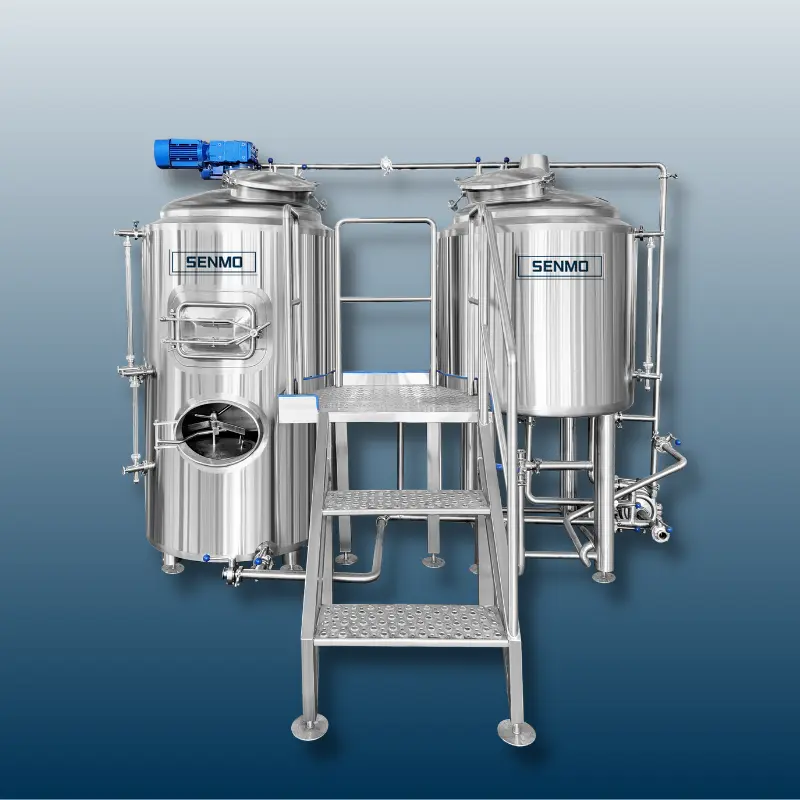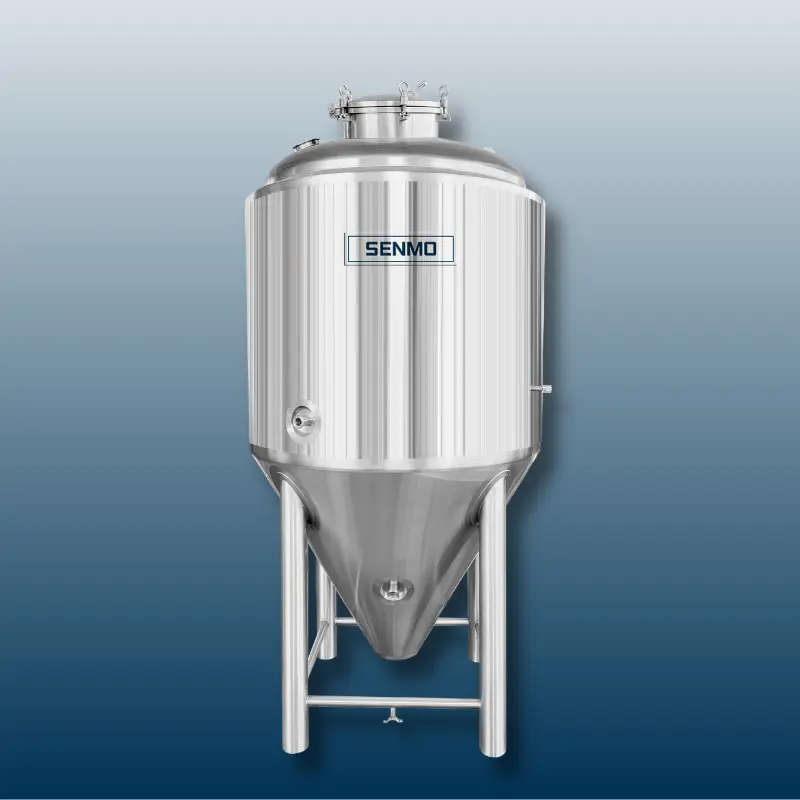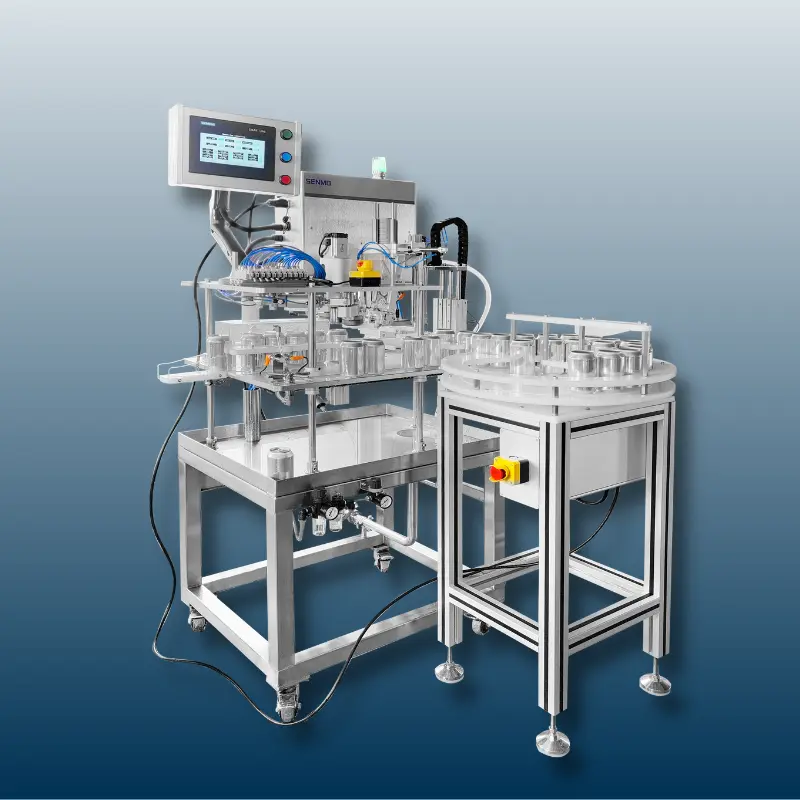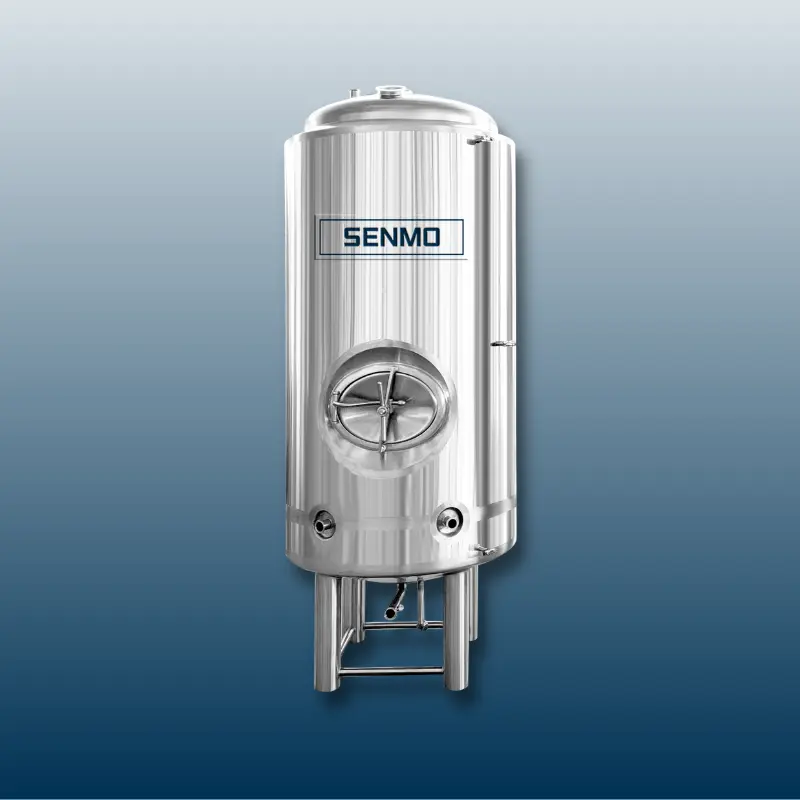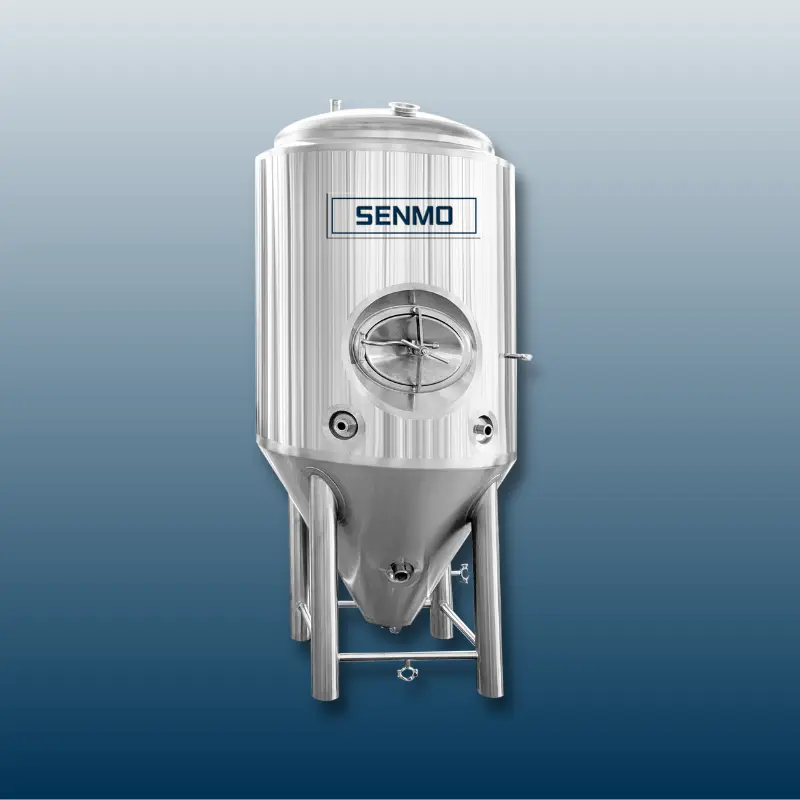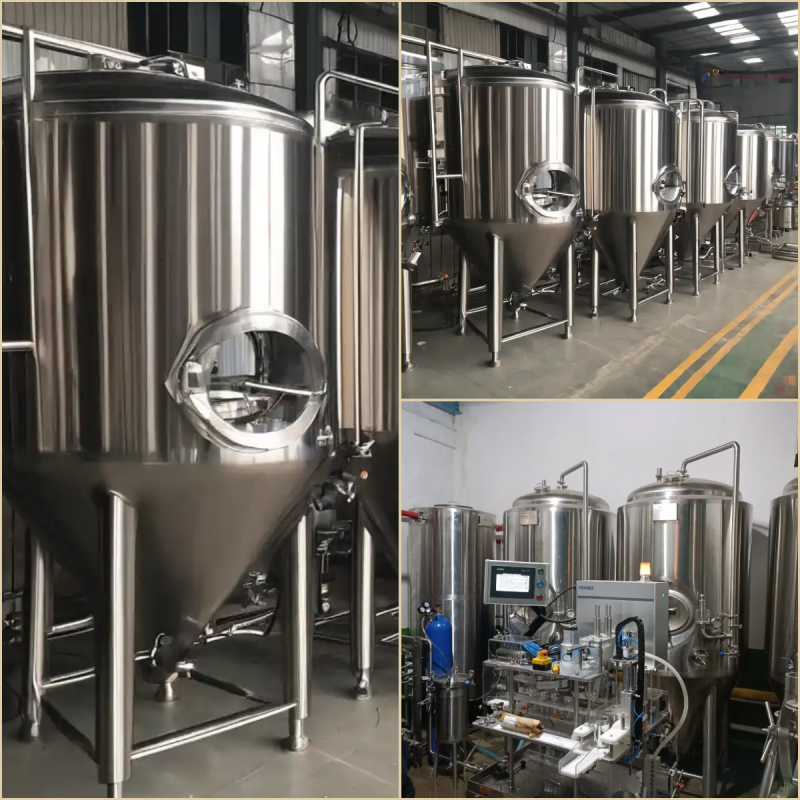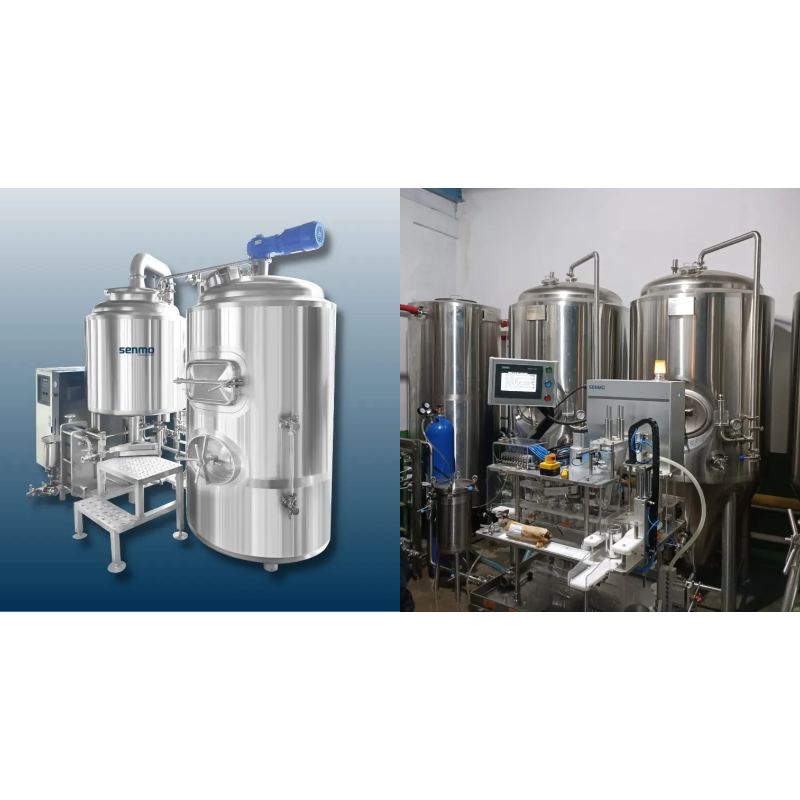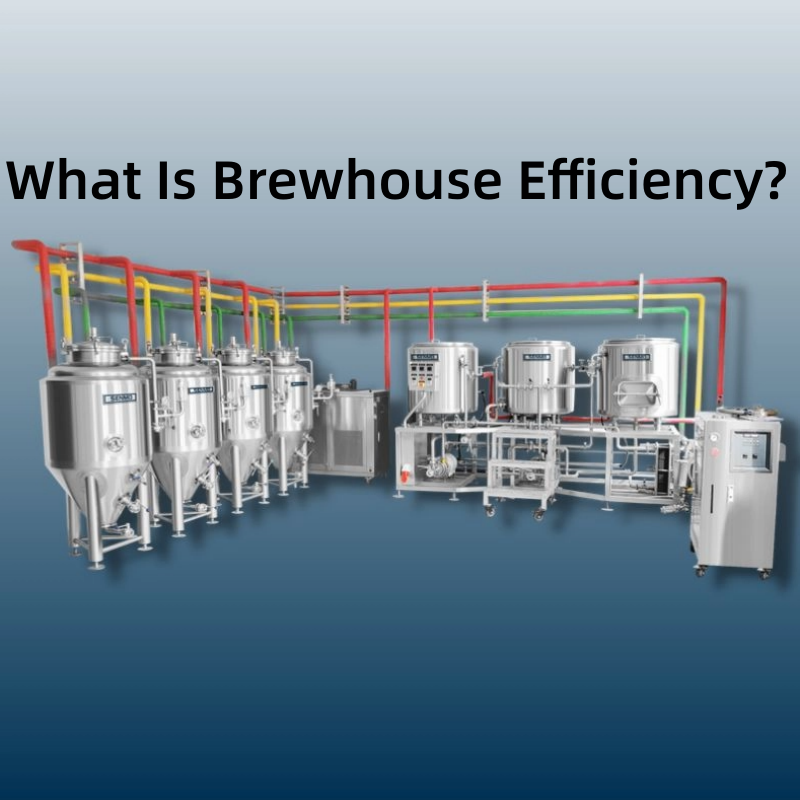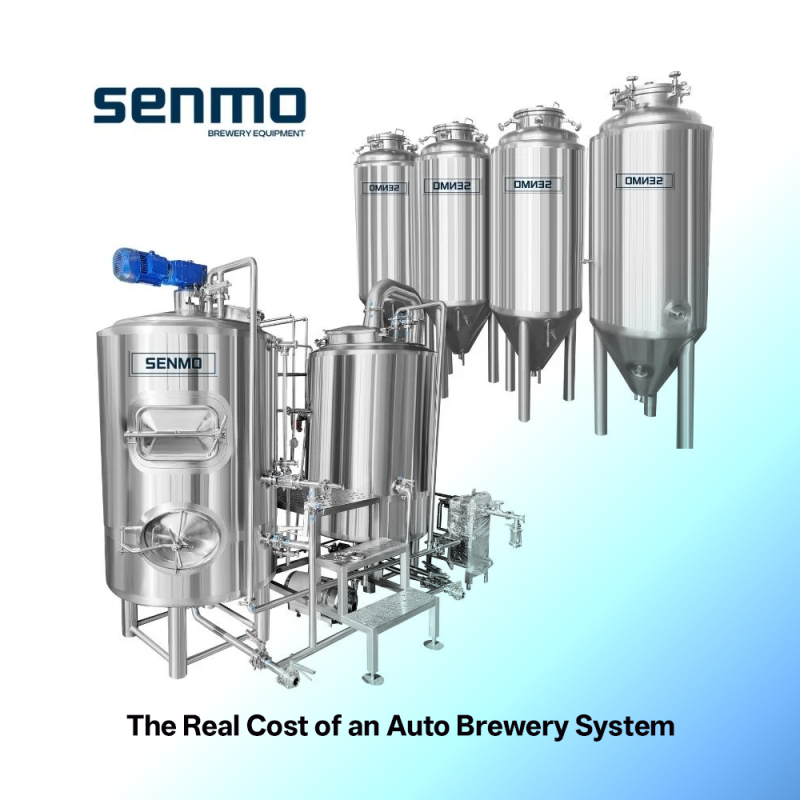The size of beer brewing equipment considered to be "large" can vary depending on the context and industry standards. However, in general, beer brewing equipment with a capacity of 1000 L (approximately 264 gallons) or more is typically considered to be "large".
Brewing equipment with a capacity of 1000 L or more is commonly used in commercial breweries and can produce large quantities of beer per batch. However, the specific size of brewing equipment can also depend on the needs and production goals of the brewery.
Large beer brewing equipment can vary in size and capacity depending on the needs of the brewery. Typically, large brewing equipment consists of several components, including a mash tun, a brew kettle, a hot liquor tank, a cold liquor tank, a fermenter, and a bright tank.
The mash tun is used to mix the grain with hot water to create a mash, which is then transferred to the brew kettle where hops are added and the mixture is boiled. The hot liquor tank is used to heat and store water for the brewing process, while the cold liquor tank is used to store chilled water for cooling the wort.
After the boiling process, the mixture is transferred to a fermenter, where yeast is added and the mixture is left to ferment for a period of time. Finally, the beer is transferred to a bright tank, where it is carbonated and stored until it is ready to be packaged and distributed.
Large beer brewing equipment can range in size from 10 barrels (310 gallons) to 100 barrels (3,100 gallons) or more, depending on the size of the brewery and the volume of beer being produced. The equipment can be made from a variety of materials, including stainless steel, copper, or a combination of both, and may be automated or operated manually.
Beer brewing is a complex process that requires precision, attention to detail, and the right equipment. For larger-scale breweries, this means investing in large beer brewing equipment that is designed to handle a high volume of beer production. The specifications for large beer brewing equipment can vary depending on the specific needs of the brewery, but there are some general specifications to consider.
Large Beer Brewing Equipment: Crafting Excellence on a Grand Scale
Are you a brewery owner with ambitious dreams of expanding your production capacity and reaching a broader audience with your craft beer? Our large beer brewing equipment is meticulously designed to meet the demands of high-volume brewing, delivering exceptional quality and efficiency on a grand scale. With this state-of-the-art equipment, you can elevate your brewing capabilities, increase output, and create a diverse range of beer styles to satisfy even the most discerning beer enthusiasts.
Key Features and Benefits:
High Production Capacity: Our large beer brewing equipment is specifically engineered to handle substantial batches, ranging from several hundred to thousands of barrels per brew. This capability allows you to meet the growing demands of your market and seize new business opportunities.
Consistent Quality: Quality is at the core of our brewing equipment design. Each element of the system is carefully crafted to ensure precise temperature control, uniform mashing, efficient lautering, and consistent boiling, guaranteeing that each batch of beer maintains its unique flavor profile and character.
Efficient Design: The equipment is thoughtfully laid out to optimize workflow and reduce production time. From automated controls to strategically positioned vessels and pumps, every aspect is meticulously planned to maximize efficiency and minimize downtime.
Flexibility and Customization: We understand that every brewery has its unique requirements and aspirations. Our large beer brewing equipment offers flexibility and customization options, enabling you to tailor the system to match your specific brewing processes and styles.
Energy Efficiency: Sustainability is a priority, even at large scales of production. Our equipment is designed with energy efficiency in mind, helping you minimize operational costs and reduce your brewery's environmental footprint.
Robust Construction: Built to withstand the demands of heavy usage, our large beer brewing equipment is crafted from premium-quality stainless steel, ensuring durability, corrosion resistance, and longevity.
Comprehensive Support: We take pride in offering comprehensive support to our clients, including installation, training, and ongoing technical assistance. Our team of experts is ready to guide you through setup and provide expert advice to ensure smooth brewing operations.
Capacity
The capacity of large brewing equipment is one of the most important specifications to consider. Typically, large brewing equipment has a capacity of at least 15 barrels (bbl), or approximately 465 gallons (1,758 liters). However, many breweries opt for larger capacities to accommodate increased production. Breweries with higher demand may need to invest in equipment with a capacity of 50 bbl or more.
Material
The material used to manufacture the brewing equipment is also an important consideration. Stainless steel is the most common material used in brewing equipment as it is durable, easy to clean, and resistant to corrosion. Other materials, such as copper, can also be used but are less common due to their higher cost and lower durability.
Heating Method
The heating method used in large beer brewing equipment can vary depending on the brewer's preference and needs. The three most common heating methods are direct fire, steam, and electricity. Direct fire involves heating the brew kettle directly with a flame, while steam involves using a steam jacket to heat the kettle. Electric heating elements can be used in both the mash tun and brew kettle. Each method has its own advantages and disadvantages, so it's important to choose the one that's best for your brewery.
Mash Tun
The mash tun is where the grain is mixed with water to create the wort. It should be large enough to hold the grain and water, with a false bottom to separate the wort from the spent grain. The mash tun should also have a system for recirculating the wort to ensure that the temperature is consistent throughout.
Brew Kettle
The brew kettle is where the wort is boiled with hops and other ingredients. It should be large enough to hold the wort and have a spigot for transferring the wort to the fermenter. The brew kettle should also have a system for whirlpooling the wort to ensure that the hops are evenly distributed.
Fermenters
The fermenters are where the yeast is added to the wort and the beer is fermented. Large breweries typically have multiple fermenters to handle the volume of beer being produced. Fermenters should have a temperature control system to ensure that the fermentation temperature is consistent.
Cooling System
The brewing equipment should have a cooling system to bring the wort down to the desired fermentation temperature after boiling. This can be achieved with a plate heat exchanger or a glycol chiller.
Cleaning System
The brewing equipment should have a cleaning system to ensure that it is properly sanitized between batches. A properly designed cleaning system will help reduce the risk of contamination and ensure consistent beer quality.
Control System
The brewing equipment should have a control system that allows the brewer to monitor and adjust the temperature, pressure, and other variables throughout the brewing process. This can be achieved with a digital control panel that is connected to the various components of the brewing equipment.
Accessories
Depending on the specific needs of the brewery, the brewing equipment may come with additional accessories such as pumps, hoses, and valves to facilitate the brewing process. These accessories should be durable and easy to clean to ensure consistent beer quality.
In conclusion, large beer brewing equipment is a significant investment for any brewery. The specifications for this equipment will depend on the size and needs of the brewery, but it is essential to consider the capacity, material, heating method, mash tun, brew kettle, fermenters, cooling system, cleaning system, control system, and accessories. By carefully considering each of these specifications, breweries can invest in equipment that will help them produce high-quality beer consistently and efficiently.
Frequently Asked Questions
1. What production capacity options are available with your large beer brewing equipment?
Our large beer brewing equipment is available in various production capacity options, typically ranging from 10 barrels (bbl) to 100 barrels (bbl) or more, depending on your specific needs and goals.
2. Can I customize the brewing system to suit my brewery's size and layout?
Absolutely! We offer customization options to tailor the large beer brewing equipment to fit your brewery's space and layout requirements, ensuring a seamless integration into your facility.
3. How long does it take to set up and commission the brewing equipment?
The setup and commissioning time can vary depending on the scale and complexity of the equipment. Our experienced technicians work efficiently to ensure minimal disruption to your brewery operations during this phase.
4. Is the equipment compatible with existing brewery infrastructure?
Yes, our large beer brewing equipment is designed to be compatible with existing brewery infrastructure, making it easier to integrate into your current brewing setup.
5. Does the brewing system come with automation options?
Yes, we offer automation options for our large beer brewing equipment, allowing for precise control of temperature, timing, and other critical brewing parameters. Automation enhances consistency and simplifies operations.
6. What kind of technical support and maintenance services do you provide?
We provide comprehensive technical support, including regular maintenance check-ups, spare parts availability, and troubleshooting assistance to ensure optimal equipment performance.
7. Can I sample or test the brewing equipment before making a purchase?
Yes, we welcome prospective clients to visit our facility for a demonstration and testing of our large beer brewing equipment. This firsthand experience allows you to witness its capabilities and quality.
8. What is the delivery timeline for the large beer brewing equipment?
Delivery timelines can vary depending on the customization requirements and order volume. Our team will provide you with a clear delivery schedule during the purchasing process.
Our large beer brewing equipment is the gateway to unlocking new possibilities for your brewery's growth and success. With its advanced technology, high production capacity, and exceptional quality output, you can confidently expand your market reach and produce outstanding craft beers for an ever-growing audience of beer enthusiasts. Let's collaborate on taking your brewery to new heights with our large beer brewing equipment. Raise your glasses to a prosperous brewing future!
